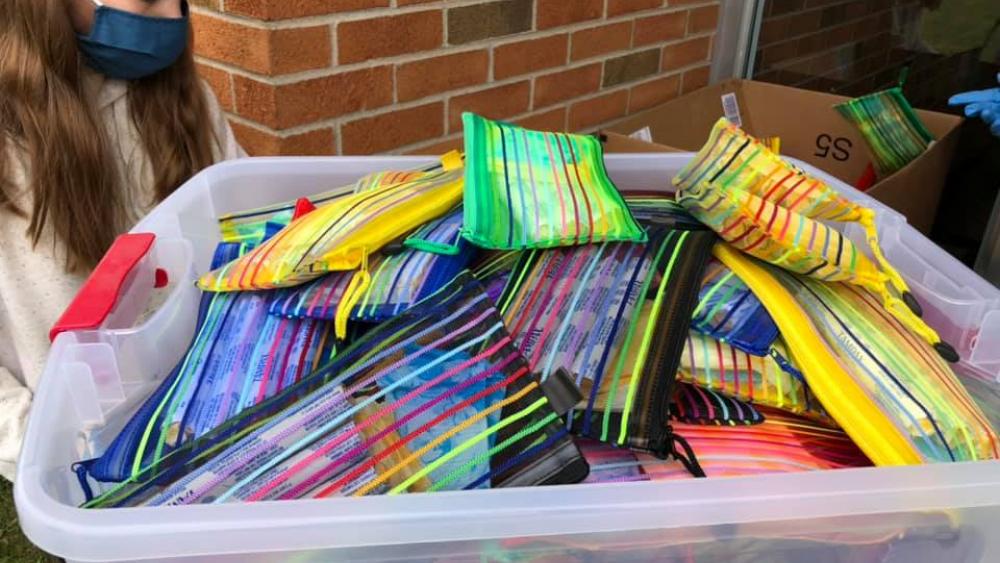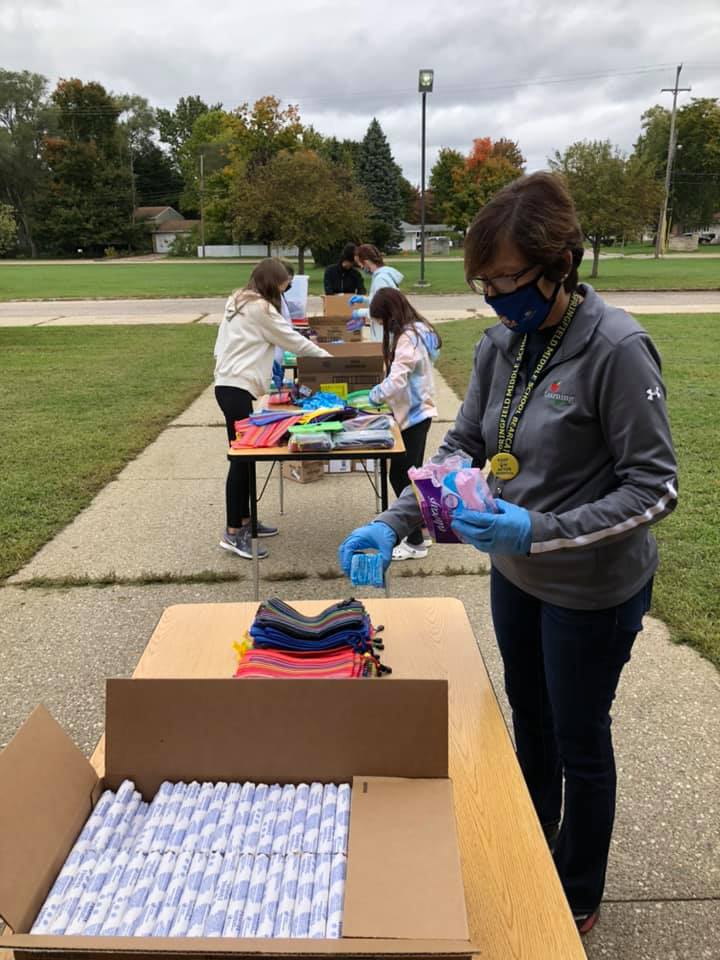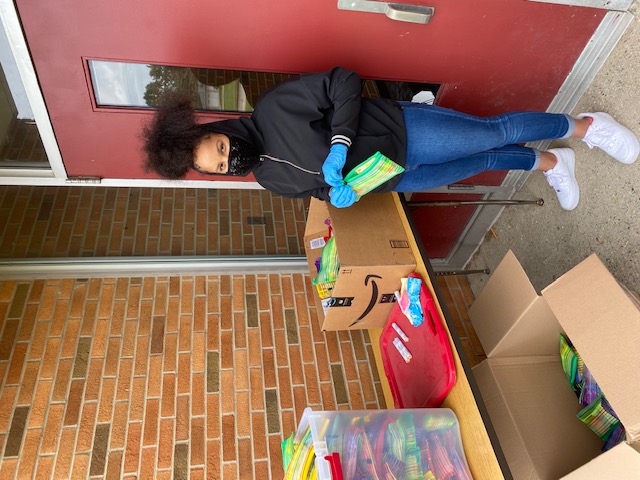Period Poverty Project
By Katherine Adamonis
Springfield Middle School in Battle Creek, Michigan, has recently been designated as a Service-Learning Middle School. Service-learning relies on a method of teaching that integrates community service activities in academic curricula. Classroom studies complement service within the community and enable students to reflect upon and address local and national problems. Curriculum from Learning to Give is used to enhance learning, service, and giving at Springfield.
On Friday, October 2, 2020, students from Mrs. Adamonis’ Learning to Give Service-Learning class performed their first project of the school year. Students put together kits to address period poverty.
In the couple weeks prior to this, students had been learning about the Stages of Service Learning. This Period Poverty project modeled for participants a demonstration of the stages of service-learning:Investigation > Preparation > Action > Reflection > Demonstration.
- First, students investigated "period poverty" by reading articles and listening to a TED Talk about the issue. Students discovered that women around the world and locally are impacted by this issue. Menstruation products are costly, and women in poverty have a hard time obtaining what they need. Not having the supplies can cause attendance issues, health problems, and even domestic issues. Once the need was identified, they wanted to do something about it.
- Next, the students looked at what is already being done to address this issue in the world. This helped them with planning how to raise awareness and take action. They used communication and problem solving to prepare for making a difference.
- Then, the students took action by coming to Springfield Middle School. While following social distancing guidelines, they put together attractive kits with menstruation supplies to give to middle and high school young women who are in need of them. Supplies for the kits were donated with funds obtained by a grant from Foresters Life Insurance Company. These assembled kits will be distributed in the Battle Creek community.
- After the students completed the planned project, they reflected on their participation. They answered these questions: What was I thinking when I was doing this project? What are a couple of things I did to complete this project? How did it make me feel to participate? What are my next steps? Answering these questions helps students realize the purpose of their project and the importance of their work.
- The next stage of the service-learning process is demonstration. Participating students were inspired to make posters, brochures, and public service announcements to inform others about this issue. In this way, students will be able to make a continued positive impact regarding an important issue while learning and helping their community be a better place to live.
For more information on period poverty: https://www.globalcitizen.org/en/content/period-poverty-everything-you-need-to-know/



